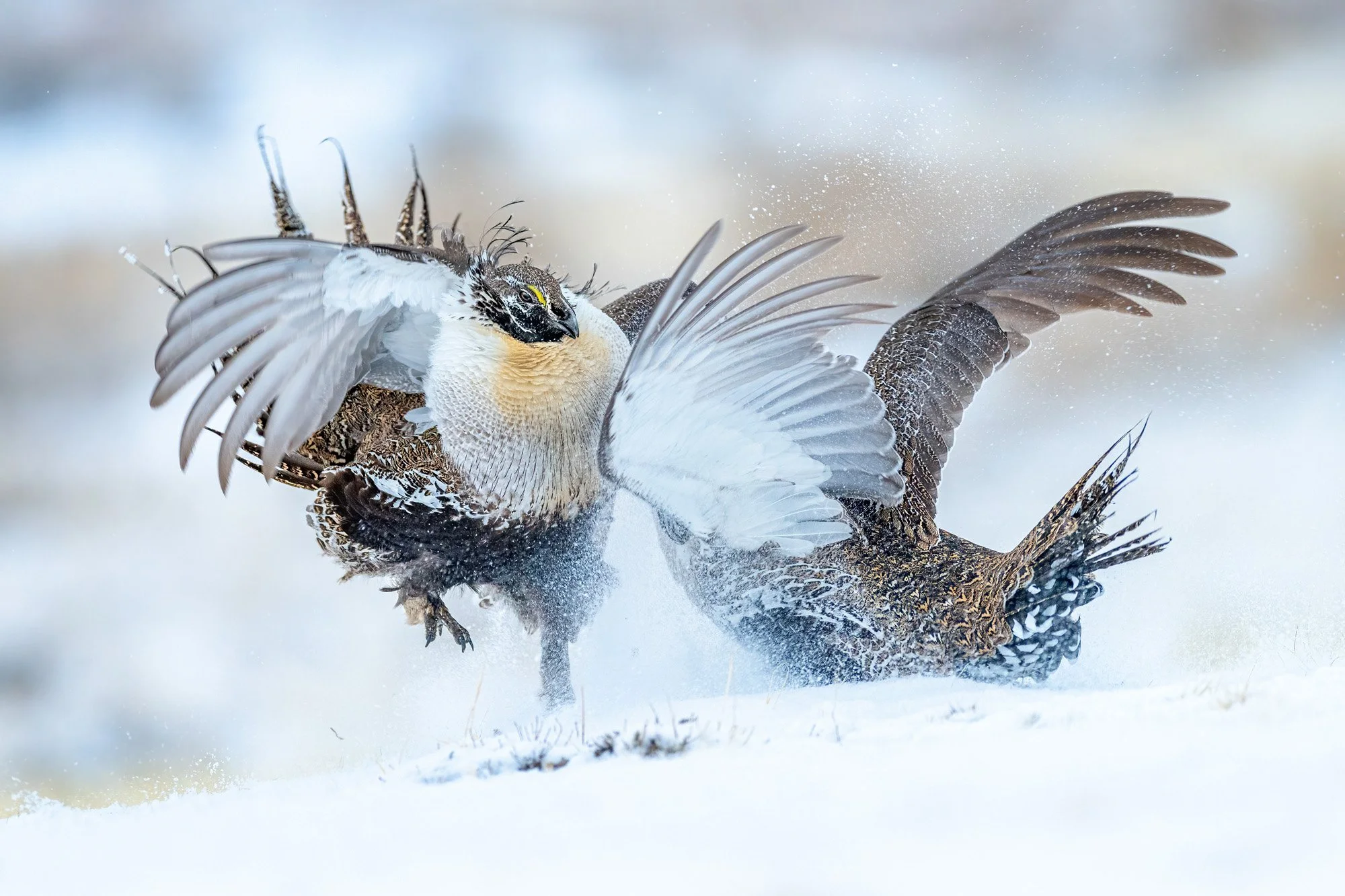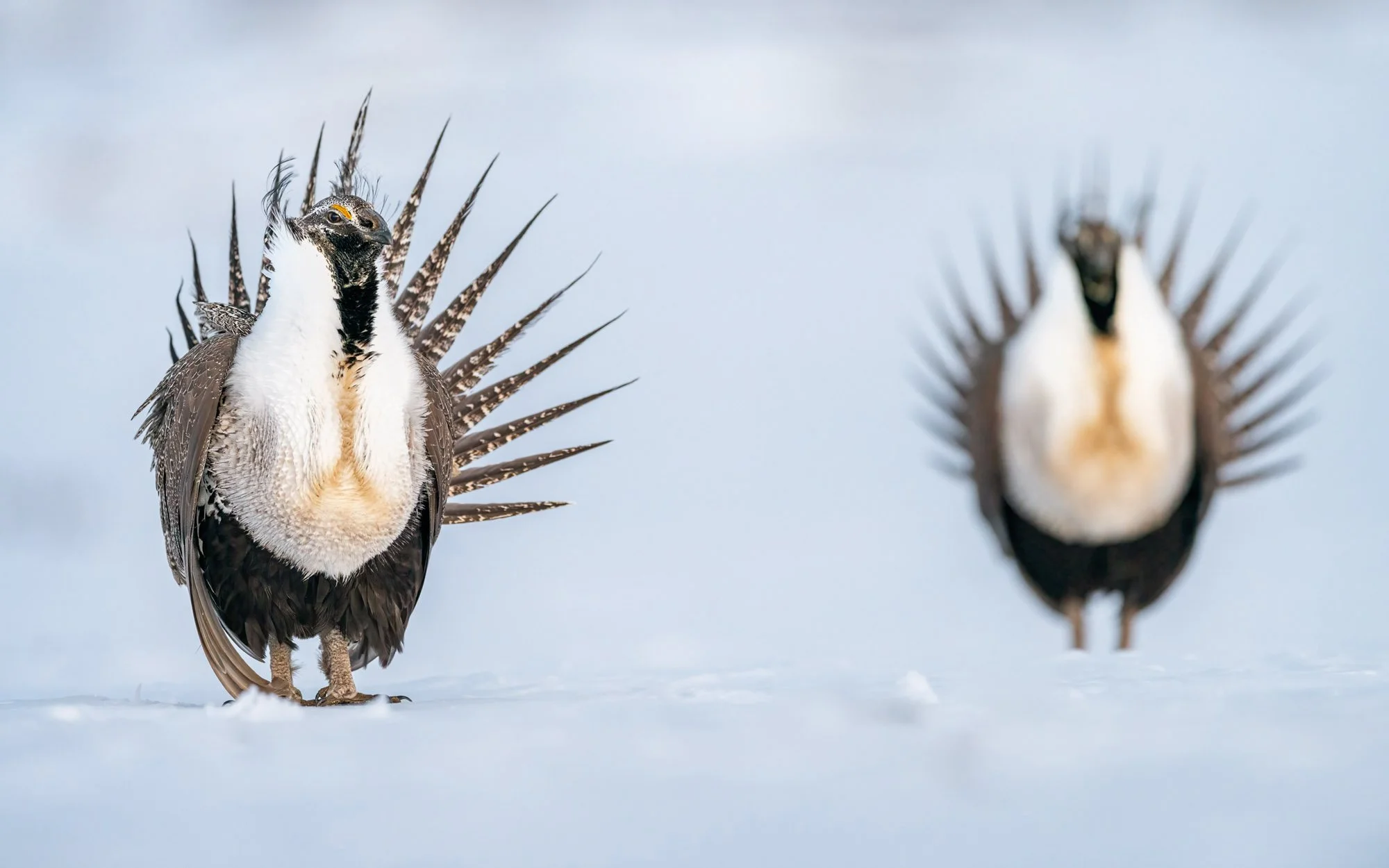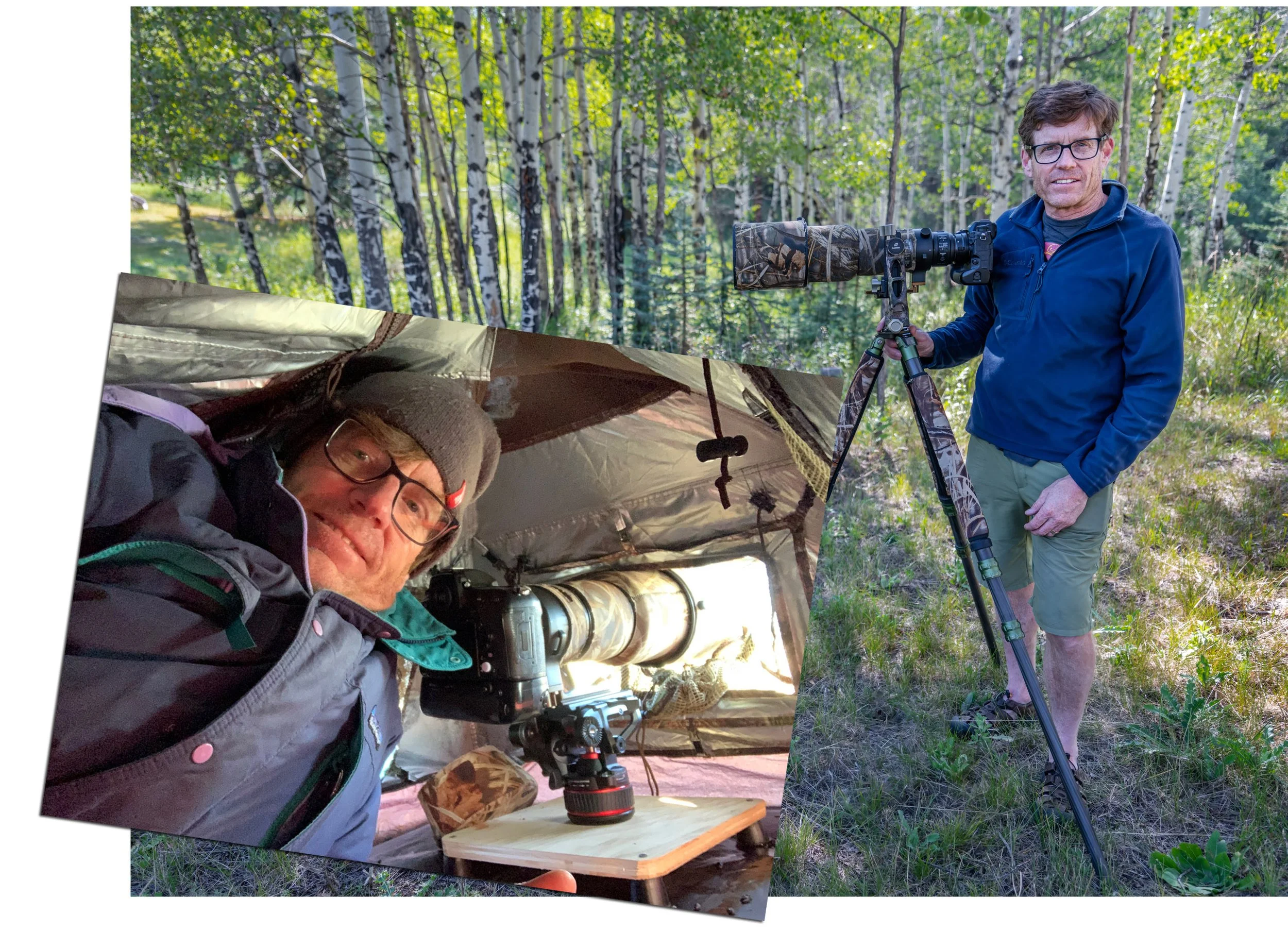Sage-grouse Survival
Sometimes referred to as Greater Sage-grouse, North America’s Sage-grouse Centrocercus urophasianus is vulnerable to habitat loss and degradation, and sensitive to disturbance. This iconic bird acts as a barometer of environmental health. It also serves as a signpost indicating the direction that we, as a species, take on our journey of progress in the twenty-first century. Photo © Peter Ismert
Above: the action at a Sage-grouse lek starts at first light. Photo © Ly Dang
The work of award-winning wildlife photographers Ly Dang and Peter Ismert helps shine a spotlight on the plight of the Sage-grouse. Their stunning images, two of which feature in the latest Bird Photographer of the Year book, collection 7, aim to engage and inspire people to care.
Above: A Sage-grouse lek and prairie habitat in early spring. Photo © Ly Dang
To set the scene, until a couple of centuries ago, large swathes of the North American continent’s interior – the Great Plains - were dominated by sagebrush prairie grassland. There are several species of sagebrush but perhaps the most significant is called Big Sagebrush Artemisia tridentata.
Sagebrush leaves and shoots are the primary source of food in winter for Sage-grouse, and in spring the plant’s flowers as well as invertebrates are dietary components.
Above: a male Sage-grouse in flight. Photo © Ly Dang
Once upon a time, Sage-grouse were present in 13 states in the U.S. west, along with three Canadian provinces. The bird’s numbers and range have declined alarmingly in recent decades. Today, the species is reckoned to occupy less than half of its historic range and the BirdLife International data page for the species shows its IUCN classification as being Near Threatened with a population of around 150,000. More recently, as reported on the Audubon website a 2021 United States Geological Survey showed a 80% decline in the population since 1965.
Reasons for the species’ decline are probably obvious to anyone with a modicum of environmental insight: the extensive conversion of natural prairie to agricultural land; oil and gas development; climate change; and general human development and disturbance. Inaction and broken environmental promises add to Sage-grouse woes. The National Audubon Society – known simply as Audubon these days – is at the vanguard of advocacy for, and protection of, the species and its threatened habitat.
Above: A scene-setting image of a Sage-grouse lek. Photo © Ly Dang
In common with some other species of gamebird, Sage-grouse gather at traditional ‘lekking’ sites at the start of the breeding season. As part of his efforts to impress females, a male Sage-grouse performs an extraordinary display: he puffs out his chest, inflates air sacs, and spreads and raises his tail while lowering the wings. A loud popping sound can be heard as the air sacs deflate. Unsurprisingly, there is competition between males as to who has the best spot in the lekking arena. Tempers fray and sooner or later fights break out, such as the one captured in Peter Ismert’s image ‘Duelling on the lek’.
Peter Ismert’s image entitled ‘Duelling on the Lek’ was the Gold Award winner of the Bird Behaviour category in the 2022 Bird Photographer of the Year competition. As Peter explained in the story that accompanied the image in the book: ‘At their traditional lekking sites, male Sage-grouse often engage in short but violent fights. They have an elaborate display designed to attract and impress females and show their superiority; inevitably this leads to rivalry between males the challenges on the lek. To get this image, I used a hide that I entered in the middle of the night. At first light I awoke to booming sounds made by the male grouse and the sight of this particular battle.’ Photo © Peter Ismert
Above: Ly Dang’s image entitled ‘Strut Performer’ was the Gold Award winner of the Best Portrait category in the 2022 Bird Photographer of the Year competition. It shows a male Sage-grouse in full display mode. Ly explained how he took the picture: ‘I arrived at the lek more than an hour before the birds so I could set up my hide without causing disturbance. Similarly, with the best interests of the birds at heart, I only packed up the hide when the last bird had left the area. In previous years I had tried to capture this type of portrait shot but had been unsuccessful. However, on this particular morning my luck changed when this bird wandered close to my hide in full display.’ Photo © Ly Dang
Ly Dang offered some additional thoughts about his environmental concerns: As the human population increases alongside advances in the fields of technology, more and more natural resources are being exploited. As a result, a tremendous toll is being taken on natural habitats for wildlife, with the added pressure of global warming pushing many species towards the brink of extinction. Without conservation and protection, nature will be imbalanced and ultimately that means our own environment and survival will be affected too – we all live in the same world. Furthermore, without action we will deprive future generations of the pleasure of seeing and enjoying the natural world as we do today. A massive effort is required to combat the decline and this requires the involvement of everyone, at many different levels.’
Ly added: ‘When people feel there is a connection between themselves and nature, then there is a chance that society will be galvanised to conserve and protect the natural world. For my part, I see the best thing I can do is to establish this connection visually - through images, convey to people the beauty of nature and wildlife, and inspire them to care. Bird Photographer of The Year is an excellent World stage for showcasing the beauty of birds, as an indivisible part of nature. The competition not only establishes the connection between people and nature, it also provides meaningful support for the conservation and protection of avian species on the brink of extinction.’
Above: Ly Dang’s hide placed strategically on the margins of a Sage-grouse lek, and the intrepid photographer on another photographic expedition to Argentine Patagonia. Photos © Ly Dang
I also spoke to Peter Ismert about Sage-grouse, specifically the challenges the birds face and the role that photography can play in helping the species. Peter commented insightfully: ‘The Sage-grouse is a lesser-known imperilled species that relies on the sagebrush ecosystem of the American west for its survival. Urgent action is needed now to halt its recent population decline and reverse its fortunes. Bringing attention to the vulnerability of this species through imagery helps educate and inform people for the protection of its habitat. Storytelling through photography provides a window to the natural world that would otherwise not be seen.’
Above: Rivals on the lek. Photo © Peter Ismert
Peter added: ‘Bird Photographer of the Year offers the opportunity to highlight vulnerable species like the Sage-grouse and provides critical funding to important charities such as Birds on the Brink to further promote species protection and habitat restoration. Conservation photography helps provide a better understanding of the threats to the natural world and enables communities to act on that knowledge to collectively find a better path forward for species survival.’
Above: Peter Ismert enjoying a spot of springtime woodland photography and (inset) in full survival gear in his freezing Sage-grouse blind .Photo © Peter Ismert










